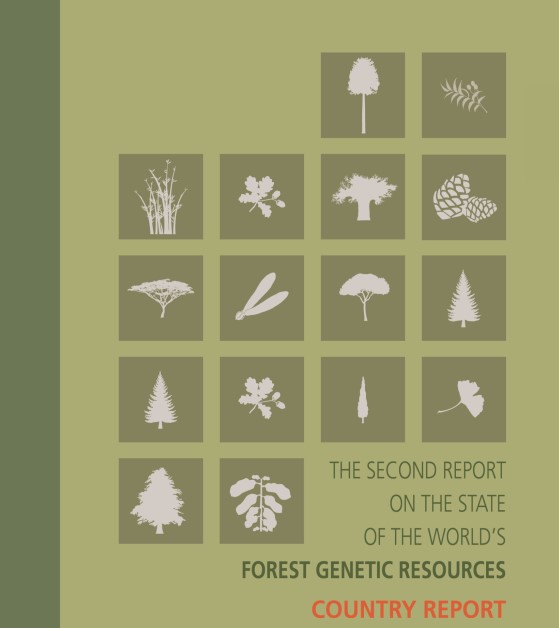
National coordinator
Andreas Rudow8092 Zürich, Switzerland
Quick Info
Letter of Agreement for Phase VII signed on 20 Mar 2025
Member since 1994
Letter of Agreement for Phase VII signed on 20 Mar 2025
Member since 1994The European Information System on Forest Genetic Resources (EUFGIS) provides geo-referenced and harmonized data on genetic conservation units of forest trees in Europe.
 | Swiss forests to be rejuvenatedSwitzerland recently adopted a new forest law that is the first to specifically link forest… |
Inventory
Since 1997 population inventories of twelve more or less rare and scattered tree species have been realised by the project Promotion of Rare Tree Species (SEBA): European white elm (Ulmus laevis), black poplar (Populus nigra), wild pear (Pyrus pyraster), service tree (Sorbus domestica), wild service tree (Sorbus torminalis), common walnut (Juglans regia), yew (Taxus baccata), Norway maple (Acer platanoides), small-leaved and broad-leaved lime (Tilia cordata, T. platyphyllos), sweet cherry (Prunus avium) and sweet chestnut (Castanea sativa). The resulting distribution surveys brought knowledge about core populations and fragmentation of these species and allowed the definition of specific national promotion strategies. Furthermore it supported practical application in the forest as well as research projects focusing on genetic and ecological aspects of these species.
So far genetic analyses on a national level have been realised for the main tree species spruce (Picea abies), silver fir (Abies alba), stone pine (Pinus cembra) three oak species (Quercus robur, Q. petraea, Q. pubescens), and for the scattered and rare tree species black poplar (Populus nigra), service tree (Sorbus domestica), wild service tree (Sorbus torminalis) and yew (Taxus baccata).
In situ conservation
The national catalogue of seed stands was established in the 1980s. Currently it includes 256 objects of over 30 tree species covering an area of 1681 ha. Several of these could serve as core populations of Gene Conservation Units (GCU) on a national or international level.
Today in Switzerland five established Gene Conservation Units (GCU) exist for the main tree species spruce (Picea abies), silver fir (Abies alba) and sessile oak (Quercus petraea). As part of the Common Action Plan (CAP) for the selection of Gene Conservation Units (GCU) of international importance over 30 potential GCU for ten rare and scattered broadleaves (selected 1st and 2nd priority species) were proposed to EUFORGEN for evaluation.
The project Promotion of Rare Tree Species (SEBA) realised systematical knowledge transfer to the forest service in two course campaigns in 2000 and 2004, visited by over 500 foresters from all over Switzerland (40%). Currently the measures for the promotion of rare and ecologically valuable tree species are supported by a governmental programme for the conservation of biodiversity in Swiss forests (NFA biodiversity, rare tree species).
Ex situ conservation
On the initiative of ETH Zurich and the canton Bern forest service ex situ conservation and seed production orchards with a total area of 4.8 ha and a total number of over 800 clones were established for several rare and scattered tree species: European white elm (Ulmus laevis), black poplar (Populus nigra), wild apple (Malus sylvestris), wild pear (Pyrus pyraster), service tree (Sorbus domestica), common walnut (Juglans regia), sycamore maple (Acer pseudoplatanus), common alder (Alnus glutinosa), small-leaved and broad-leaved lime (Tilia cordata, T. platyphyllos), sweet cherry (Prunus avium).
National catalogue of seed stands (NKS)
Project Promotion of Rare Tree Species (SEBA)
Governmental programme (NFA biodiversity, tree species)

Sorbus domesticaGenetic consequences of low local tree densities – Implications for the management of naturally rare, insect pollinated species in temperate forests | Download | |
Populus nigraA large scale survey of Populus nigra, presence and genetic introgression from non-native poplars in Switzerland based on molecular identification | Download | |
Pinus cembraGradual decline in genetic diversity in Swiss stone pine populations (Pinus cembra) across Switzerland suggests postglacial recolonization to the Alps from a common eastern glacial refugium | Download | |
Pinus cembraVariation in the chloroplast DNA of Swiss stone pine (Pinus cembra) reflects contrasting postglacial history for populations from the Carpathians and the Alps | Download | |
Sorbus torminalisMating patterns and contemporary gene flow by pollen in a large continuous and a small isolated population of the scattered forest tree Sorbus torminalis | Download | |
Taxus baccataDynamics of genetic variation in Taxus baccata: local versus regional perspectives | Download |

Populus nigra Network: Report of the sixth meeting

Picea abies Network: Report of the first meeting

Picea abies Network: Report of the second meeting